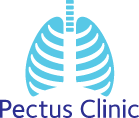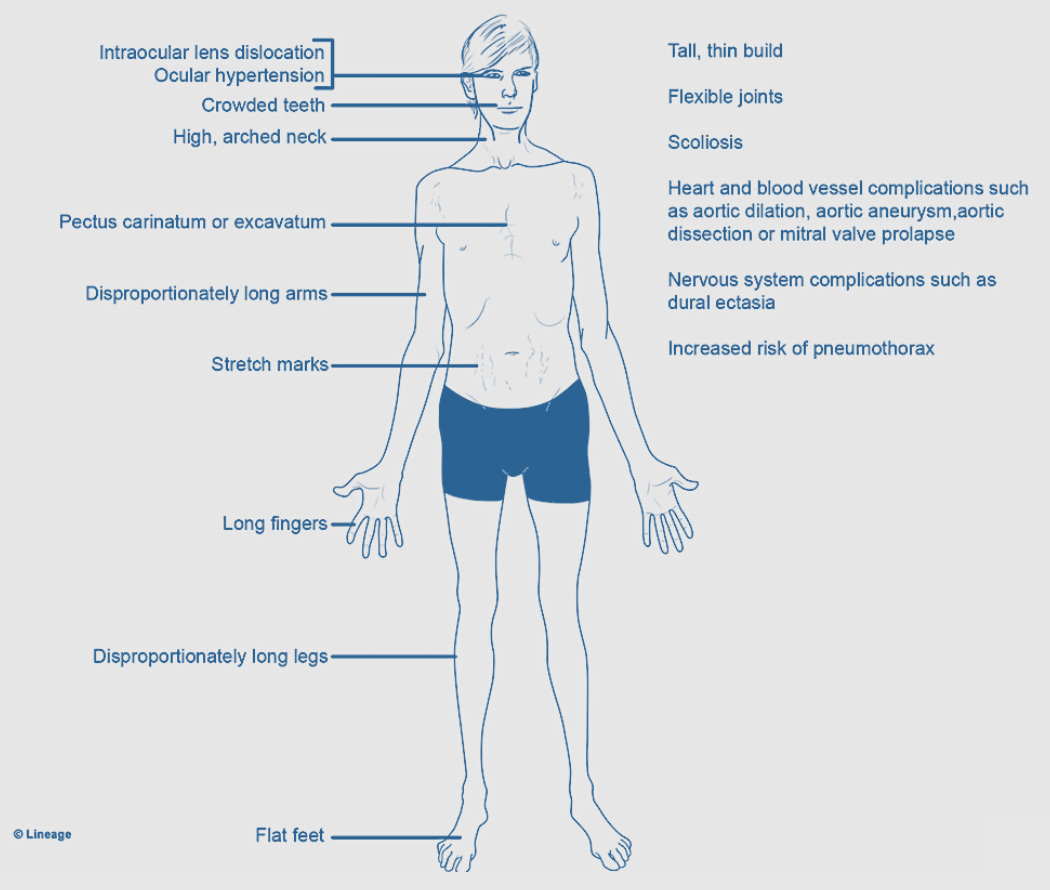Associated Conditions
Most Pectus deformities are isolated and not associated with other medical conditions, though around 25% cases do run in families. One condition particularly associated with pectus is scoliosis, or abnormal curvature of the spine. Unlike isolated pectus excavatum or carinatum, Poland's syndrome and other similar but rarer syndromes are caused not by overgrowth of the costal cartilages resulting in a 'sinking' or 'protrusion' of the chest but by what doctors call aplasia or hypoplasia (no or under development) of the chest wall. Other syndromes that can be seen with pectus deformities include a group of disorders collectively called 'connective tissue' disorders. These disorders cause systemic (global) weakness of the connective tissues (the building blocks or scaffold of the body) leading to poor musculoskeletal development. The common associated syndrome is Marfan syndrome, a genetic condition more common in boys that can cause a cluster of problems including problems with the eyes, heart, lungs and central nervous system as well as pectus deformities. Other connective tissue disorders associated with pectus deformities including Ehlers-Danlos syndrome, classically associated with joint hypermobility and skin laxity osteogenesis imperfecta or brittle bone disease, and homocystienuria. In addition, along with Marfan syndrome, other forms of Congenital Heart Disease can be associated with pectus deformities, as well as Noonan Syndrome another genetic condition associated with heart disease as well as pectus excavatum, pectus carinatum, scoliosis and slightly unusual facial features including widely spaced eyes, light-coloured eyes, low-set ears, a short neck, and a small lower jaw.
Please click on the buttons below to see and read about patients verified experiences (in their own words) and testimonials (which generally include before and after treatment photos). The pectus clinic is very grateful to all the patients who provided feedback.
Scoliosis
The normal shape of a person’s spine includes a curve at the top of the shoulder and a curve at the lower back. In Scoliosis, the spine is curved from side to side or in an “S” or “C” shape. Scoliosis can be congenital or developmental and can also be categorized as either structural or non-structural. In structural scoliosis, the spine’s curve is caused by a disease, injury, or birth defect, and is permanent. Non-structural scoliosis describes temporary curves that can be fixed for example following chest injury or surgery.
Video of Chest CT 3d reconstruction of combined idiopathic scoliosis and pectus excavatum
Poland’s Syndrome
Presenting at birth this congenital condition affects boys 3 times more commonly than girls. It causes under development or 'missing' chest wall muscles such as pectoral muscles and bones such as ribs as well as affecting the arm and hand.
In most affected individuals, there is absence of the sternal portion of the pectoralis major as well as absence of the pectoralis minor. The pectoralis major, a large muscle of the upper chest wall, arises from the sternum, the collarbone (clavicle), and cartilages of the second to the sixth ribs; it acts on the joint of the shoulder, functioning to move the arm across the body. The pectoralis minor is a thin, triangular muscle beneath the pectoralis major. This muscle arises from the third to fifth ribs and functions to rotate the shoulder blade (scapula) and move it forward and down. In some individuals with Poland Syndrome, there may also be unilateral absence of other regional muscles, such as certain large muscles of the back (latissimus dorsi) and/or a thin muscle of the chest wall that extends from ribs under the arm to the scapula (serratus anterior).
In some cases, associated abnormalities may include underdevelopment or absence of the darkened area around the nipple (areola) and the nipple and/or abnormal patchy hair growth under the arm (axilla). In addition, in affected females, there may be underdevelopment or absence of the breast and subcutaneous tissues.
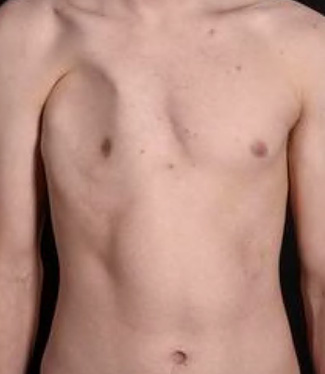
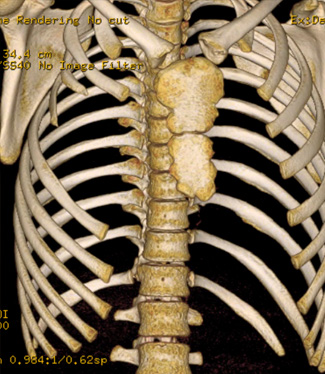
Young man with missing right pectoral muscles and partial absence of the front of the 3rd and 4th ribs
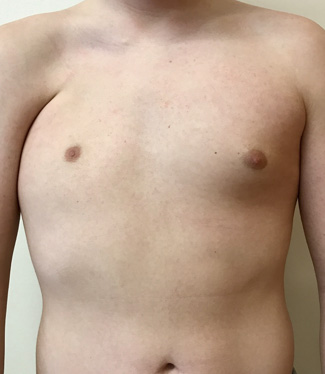
Young man with complete absence of pectoralis major and minor
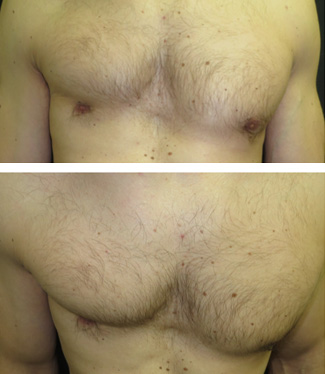
Young man with partial absence of right pectoralis major
| Chest Features of Poland’s Syndrome |
|---|
| Absent or lack of pectoral and shoulder muscle in the chest area with an underdeveloped ribcage including missing ribs or costal cartilage |
| Pectus deformity (excavatum or carinatum) though absent muscle may give an impression of a concave chest without a true pectus excavatum |
| Seemingly “missing” shoulder and elevated shoulder blade |
| Shorter fingers on one hand, always on the same side as the affected part of the chest muscle and fingers that are webbed, or stuck together. Shorter forearm on one side |
Treatment options when indicted can involve reconstructive chest wall surgery involving reconstruction of chest wall including rib replacement, using existing chest wall muscles (or other muscles throughout the body as needed) to fill in missing portions and/or using implants to cover deformity.
Marfan Syndrome
It is a hereditary connective tissue disorder though the exact pattern of inheritance is not clear. The common clinical features include abnormal development of the rib cage. Abnormal growth and elongation of the hyaline cartilaginous connection between the ribs and breastbone, known as the costal cartilage, results in either compression (pectus excavatum) or protrusion (pectus carinatum) of the breastbone (sternum). Unbalanced growth leads to asymmetry and may also involve misalignment and rotation of the sternum or ‘sternal tilt’. The deformity is sometimes visible in early childhood, but becomes more obvious during accelerated periods of growth, typically during puberty and early teenage years. Marfan's patients often have a particular appearance (often described as 'Marfanoid') including being very tall, with disproportionally long slender limbs and long fingers and toes.
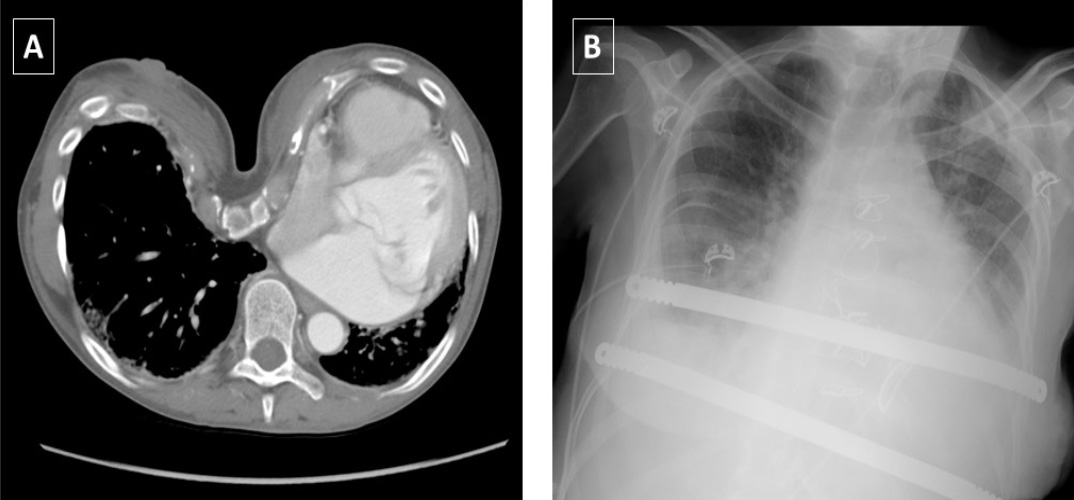
Pre-operative Chest CT image of a severe pectus excavatum deformity in a Marfan patient requiring an aortic root replacement (A) and following aortic surgery and placement of 2 bars concomitantly (B) to correct the pectus and aid the cardiac surgery
Ehlers-Danlos syndrome
The Ehlers-Danlos syndromes are a group of connective tissue disorders that can be inherited and are varied both in how they affect the body and in their genetic causes. They are associated classically joint hypermobility (joints that stretch further than normal), skin hyperextensibility (skin that can be stretched further than normal), and tissue fragility.
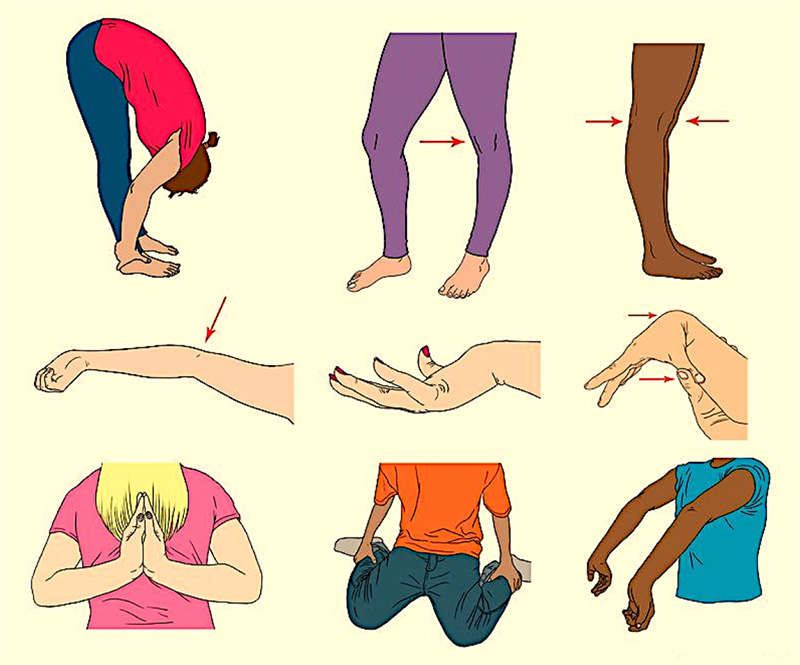
Joint hypermobility that may be associated with Ehlers-Danlos syndrome
Osteogenesis imperfecta
Osteogenesis imperfecta (OI), also known as brittle bone disease, is a group of genetic disorders that mainly affect the bones. It results in bones that break easily. The severity may be mild to severe. Other symptoms may include a blue tinge to the whites of the eye, short height, loose joints, hearing loss, breathing problems and problems with the teeth. Pectus deformities of the chest wall, while not common, can be associated with OI. The use of a pectus carinatum brace in a patient with OI poses unknown risks for fractures but can be successfully used.
Homocystinuria
Homocystinuria is a genetic disorder that affects the metabolism of the amino acid methionine. Amino acids are the building blocks of life.
| Musculoskeletal features of Homocystinuria |
|---|
| Tall, thin build resembling Marfanoid habitus |
| Pectus excavatum and Pectus carinatum |
| Long limbs (dolichostenomelia) |
| High-arched feet (pes cavus) |
| Knock knees (genu valgum) |
Noonan syndrome
Noonan syndrome (NS) is a genetic disorder that may present with mildly unusual facial features, short height, congenital heart disease, bleeding problems, and skeletal malformations including pectus deformities. Facial features include widely spaced eyes, light-coloured eyes, low-set ears, a short neck, and a small lower jaw.
Please click on the buttons below to see and read about patients verified experiences (in their own words) and testimonials (which generally include before and after treatment photos). The pectus clinic is very grateful to all the patients who provided feedback.
